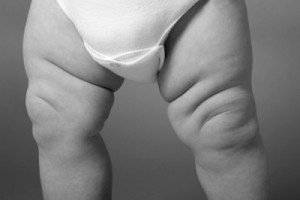No matter how many times toddlers fall when they try to run around the room, they don't seem to break a bone or hurt themselves badly. They climb, jump and run for hours and occasionally fall on their knees, but after a short bout of crying, they simply go back to their activities. Do babies have soft bones? Are babies born without kneecaps? These are some questions parents often wonder about.

Are Babies Born Without Kneecaps?
Of course, babies are born with kneecaps. However, they are much softer than the adult kneecap. Babies and young children have all the bones an adult has, but although they are softer, these bones are strong enough to support their bodies. Their skeletons are actually made of immature bone and cartilages which continue to grow, elongate and become stronger as they become older. By the time they reach adulthood, their bones would have reached their final size and achieved more strength.
Are babies born without kneecaps? The kneecap, also called patella, starts out as a soft cartilage in a newborn baby. By the time they reach the age of 3 to 5 years, irregular patches of bone are deposited to form the bony patella. These patches of bone expand, growing together over the years, and gradually fusing into a firm bony kneecap by the age of 10-12 years. Some cartilage still remains, which allows the continuous growth of the kneecap throughout adolescence. When the bony patches fully expand and coalesce, the cartilage is replaced and the result is a strong adult-sized kneecap.
How Do Babies' Kneecaps Develop?
Are babies born without kneecaps? They do have kneecaps at birth, but their bones start developing from cartilage, which remain as cartilages at the time of their birth. Cartilages form bones over time in a process known as ossification. Cells called the osteoblasts develop in the linings of the cartilage and produce compact bone, covering the cartilage. Blood vessels form around the cartilage and form a nutrient artery, which nourishes the developing bone. The primary ossification center then develops and continues producing bone cells that replace the cartilage with the new bone.
As a baby is born, their kneecaps still consist of soft cartilage, which remain so for years. That’s why your toddlers don't seem to break their knees even when they fall all the time – their knees are like sponges which absorb the compression and pressure whenever they fall. By the time they reach the age of 3 or 5 years, these cartilages start ossifying into bony kneecaps. Several more years after that, their bones lose their bounce, and their spills become more painful, until their skeletons begin creaking, just like the rest of the adults.
More Amazing Facts about Babies
1. Babies know math.
Do you know that babies may have a basic knowledge of math and physics? Psychologists observed that a baby can tell the difference if two or three objects are shown to them and one is taken away.
2. Babies always listen.
From the moment they're born, a young baby can recognize their mother's voice. He can also easily distinguish where a certain sound is coming from.
3. Newborn babies cry without tears.
They can cry all night and day, but you won't see tears until after a few weeks or even months. It is believed that stress hormones which are found in human tears, help calm them down.
4. Each baby has a unique cry.
This specific sound is one that a mother can recognize within a few days after they are born, even if other babies are crying in a room.
5. A newborn can naturally latch on to their mother's breast.
Scientists found that if you place your newborn directly onto your stomach just after birth, your baby may start using his arms and legs to crawl slowly to your breast to nurse, being able to latch on and start nursing unassisted.
6. Babies can see your face.
In the first three months of life, babies see objects that are 8-9 inches away, which is the typical distance of your face to his when you're holding and feeding him. This also allows them to focus on their hands when they play.
7. Your baby reads the tone of your voice.
Your baby knows if you are speaking in a happy tone and respond to your voice appropriately. However, if you speak in an angry voice, your baby may show signs of fear or agitation.
8. Your baby grows fastest on the first year of life.
However, this growth rate is not sustained throughout life, otherwise he would be as tall as a tree by the time he grows into an adult! His brain can double its size by the time he is one year old when the brain would be half the size of your own brain.
